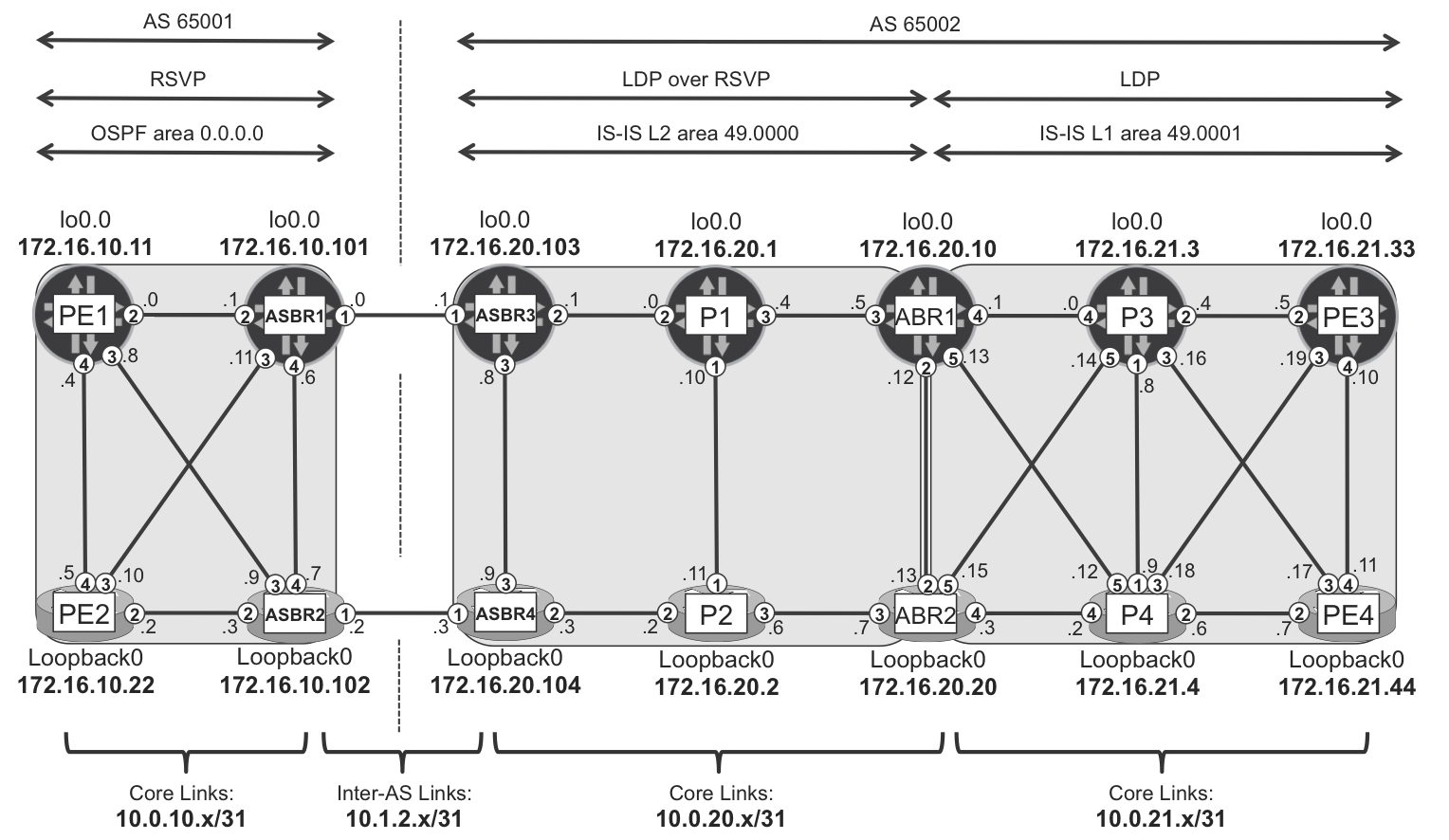Chapter 17. Scaling MPLS Services
Chapter 16 discusses different methods for scaling IP/MPLS transport. Unfortunately, in order to design large, scalable networks, it is often not enough to scale the transport. As the next step, you will learn about different design models to scale MPLS services.
The general problem with MPLS service scaling is that you can have a network device, which supports a limited number of routes (in L3VPN deployments), limited number of MAC addresses (in VPLS or EVPN deployments), limited number of features supported (e.g., no support for L3VPN, no support for VPLS/EVPN), and so on. To alleviate all of those problems, the MPLS service itself must be designed in a scalable manner.
This chapter presents some typical architectural models to scale L3 MPLS services. More specifically, the two examples used here are: Default Route Hierarchical L3VPN and PWHE-based Hierarchical L3VPN. However, you can port many of the ideas presented here to other MPLS services. These examples are inspired on the Mobile Backhaul (MBH) use case.
Hierarchical L3VPN
The network topology used for the discussion of service scaling will be basically the same as the multidomain topology described in Chapter 16. For reference, this topology is presented in Figure 17-1.

Figure 17-1. Multidomain topology
To create a meaningful basis for a discussion on service scaling, in addition to ...
Get MPLS in the SDN Era now with the O’Reilly learning platform.
O’Reilly members experience books, live events, courses curated by job role, and more from O’Reilly and nearly 200 top publishers.

